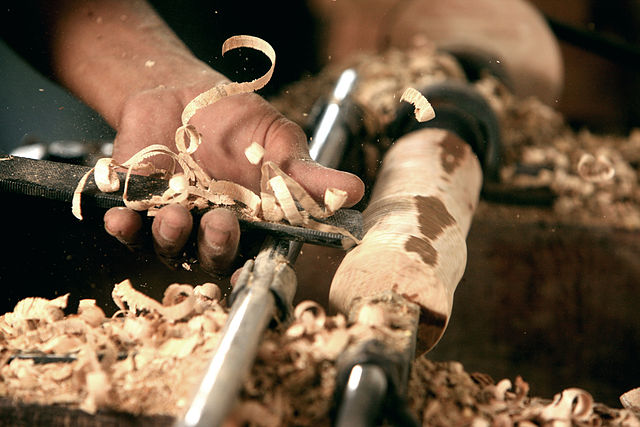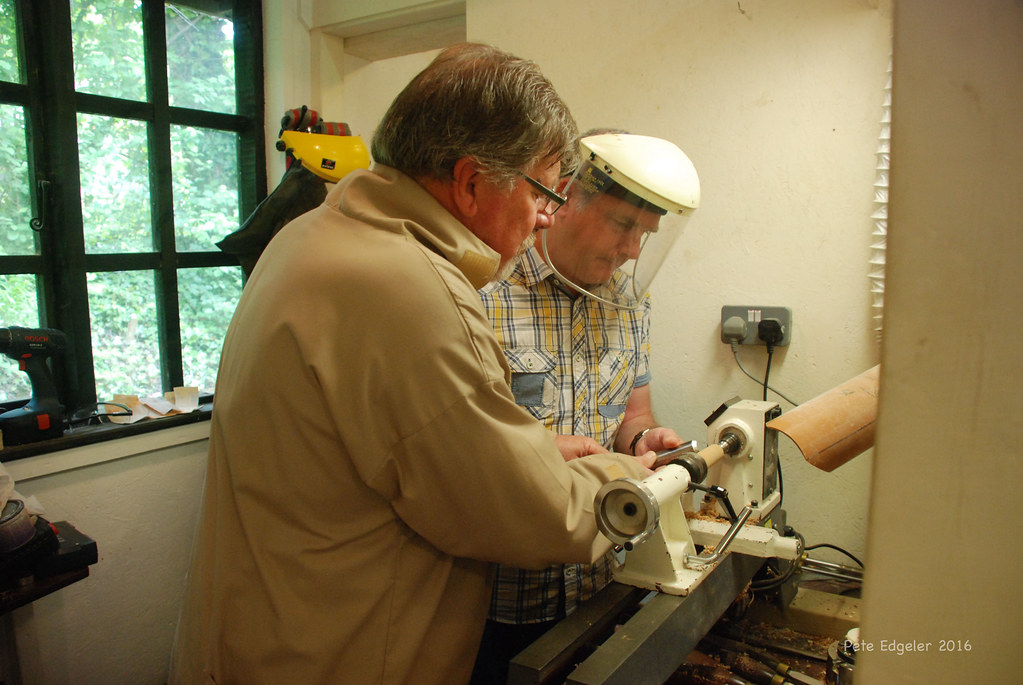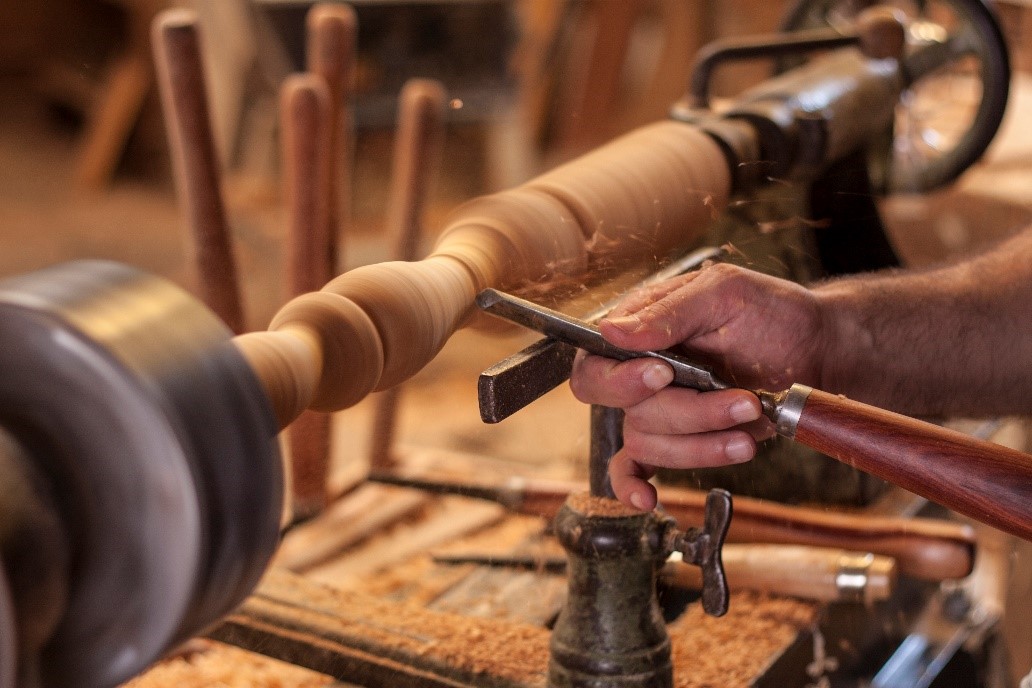
A lidded box requires that you square the sides and perimeter of your box. The lid and box are typically cut from the same 2-in thick block of seasoned wood. To square the base, start by cutting a foot on one side of the wood. Because the final box will rest on the base alone, the center must be slightly recessed. Use a small scraper to cut the recess.
Hollowing end grain in lidded cabinets: challenges
A common challenge in box-making is hollowing end grain. This process can be difficult and requires special tools. An old screwdriver can be used to create a basic hollowing tool that costs $30. You can also buy a gouge to use for this purpose. Avoid sharp edges when hollowing end grain. A gouge should have flat, long edges and a circular fingernail shape.
End grain hollowing is five times more difficult than side grain. It can also easily tear out. Experiential bowl turners can have problems hollowing end grain. This can be solved by changing from a gouge into a scraper, but it's worth noting that lidded containers often require special tools for hollowing end grain.
Techniques for making a snap-fit lidded box
A snap-fit lidded boxes is a container with a sliding seal. These boxes contain liquids and other liquid-filled containers. They are easy to assemble and disassemble, and can be automated for low assembly costs. There are many kinds of snap-fits. Engineers should evaluate each one for cost, strength and potential failure rates. This article provides an overview on the different types and uses of snap-fits.
The upper portion of a 3-D printed snap-fit lidded cardboard box should be designed with the correct measurements. The upper portion should be snug with the base. The lid should not move when seated. It should have a tight fit. In small pieces, you can remove the wood. This is a difficult process, but it is well worth it.
Wooden used to make lidded boxes

You can salvage wood from trees to make the different types of wood used in lidded boxes. After the tree has been cut, it is dried to prevent cracks. After drying, the wood shrinks. Depending on the design, the lidded box can also be made from different types of wood. A lid is typically made of two pieces. One piece is smaller than the others.
By turning small circular containers on a lathe, they could be made with lids. Boxwood is a slow-growing, thin-grained tree that has a tight grain and thin parts. This wood was especially good for creating fine features due to its close spacing. It was used regularly to make double-sided combs, which were made from this wood. The boxwood used in the making of lid boxes was also known by the name pyxides.
Size of the lidded boxes
The wood type you use will affect the dimensions of your lidded boxes. Maple and cherry are most commonly used. These two types are great for making boxes. They have different shrinkage rates. For a quality box, wood should be three inches square and five or six inches long. Make sure the wood is dry when you choose it for your box. Exotic woods are an option for a visually appealing lid. But you need to be well-versed in the process.

First, prepare the wood. To make the bottom smooth and round, a thin file is needed. After that, cut a V-shaped cut at the joint. Once you are satisfied with the shape, you will be able to use a spindle-roughing tool to finish shaping the remainder of the box. Before you begin carving the lid use a dividing tool to mark where the bottom is. A skew knife can be used to make a small cut on the base of lid. This will soften your corner and conceal any slight circularity in the base/lid joints.
FAQ
Where can I locate free woodworking plans
You don't need to purchase any books or magazines to find free woodworking plans. You just need to search Google. Enter "free woodworking", and you will see hundreds upon hundreds of websites offering free plans.
Can you teach yourself woodworking?
The best way to learn anything is by doing. Woodworking takes practice, skill, patience and experience. Every craft takes practice and patience.
You can learn the most effective way to master a skill is by actually doing it. So start small and build on what you have learned from there.
What's the difference between plywood vs particle board?
Plywood is made of layers of wood that are pressed together under pressure. Plywood is available in a variety of thicknesses. It is often used to make cabinets or flooring. Particle board is made up of sawdust mixed in resin, then compressed into large pieces. It is used primarily for home improvements. Both boards can be cut easily and are both durable.
Do I have to refinish my furniture?
Yes! There are many options for refinishing furniture that you don't need to hire a professional. Here are a few suggestions:
Use sandpaper on the surface to remove any stains or scratches. Use a clean cloth to wipe the surface.
Apply clear polyurethane varnish. Allow to dry completely before moving furniture.
Acrylic paint can be used to paint furniture.
Instead of using paint, stain is a better choice. The furniture will get a rich look with the stain.
Use shellac wax. The wax will add shine to the wood and protect it.
Statistics
- In 2014, there were just over 237,000 jobs for all woodworkers, with other wood product manufacturing employing 23 percent; wood kitchen cabinets and countertop manufacturing employing 21 percent. (theartcareerproject.com)
- Woodworkers on the lower end of that spectrum, the bottom 10% to be exact, make roughly $24,000 a year, while the top 10% makes $108,000. (zippia.com)
- The best-paid 10 percent make $76,000, while the lowest-paid 10 percent make $34,000. (zippia.com)
- The U.S. Bureau of Labor Statistics (BLS) estimates that the number of jobs for woodworkers will decline by 4% between 2019 and 2029. (indeed.com)
External Links
How To
How to properly use a handsaw
The wood is cut into pieces using a hand saw. There are many types of handsaws: jigsaws and table saws; band saws; sabersaws; crosscut saws; miter saws; and rip-saws. A handsaw is a tool made of metal or plastic that cuts material like wood, plastics, metals and others.
Hand saws have the main advantage of cutting at precise angles without needing to adjust the blade. It's also much easier to sharpen them than power tools. However, they do have some disadvantages. For example, they are heavy and bulky, so you must be careful when transporting them. Also, if you do not know how to use one, you could easily injure yourself.
There are many different ways to hold a hand saw. While cutting, it is important to keep your hands clear of the blades. If you don't, you might get hurt. While holding the saw, make sure you place your fingers around its handle. Keep your thumb close to the blade. This ensures that the blade is not accidentally touched.
Never place anything under a piece of wood that you're cutting with a handsaw. This could cause the blade to slip from the wood's surface. Always check the area where you want to cut before starting. Check for nails, screws and other objects underneath the wood.
You should always wear safety goggles when working with a hand saw. They prevent dust from getting into your eyes, making it easier to see what you're doing. Safety glasses can also be useful as they protect your skin from flying debris.
Before you start working with a saw, it is important to learn how to use it safely. Next, practice until your confidence is high enough to begin cutting. Once you master the basics you'll be able to easily cut most anything.